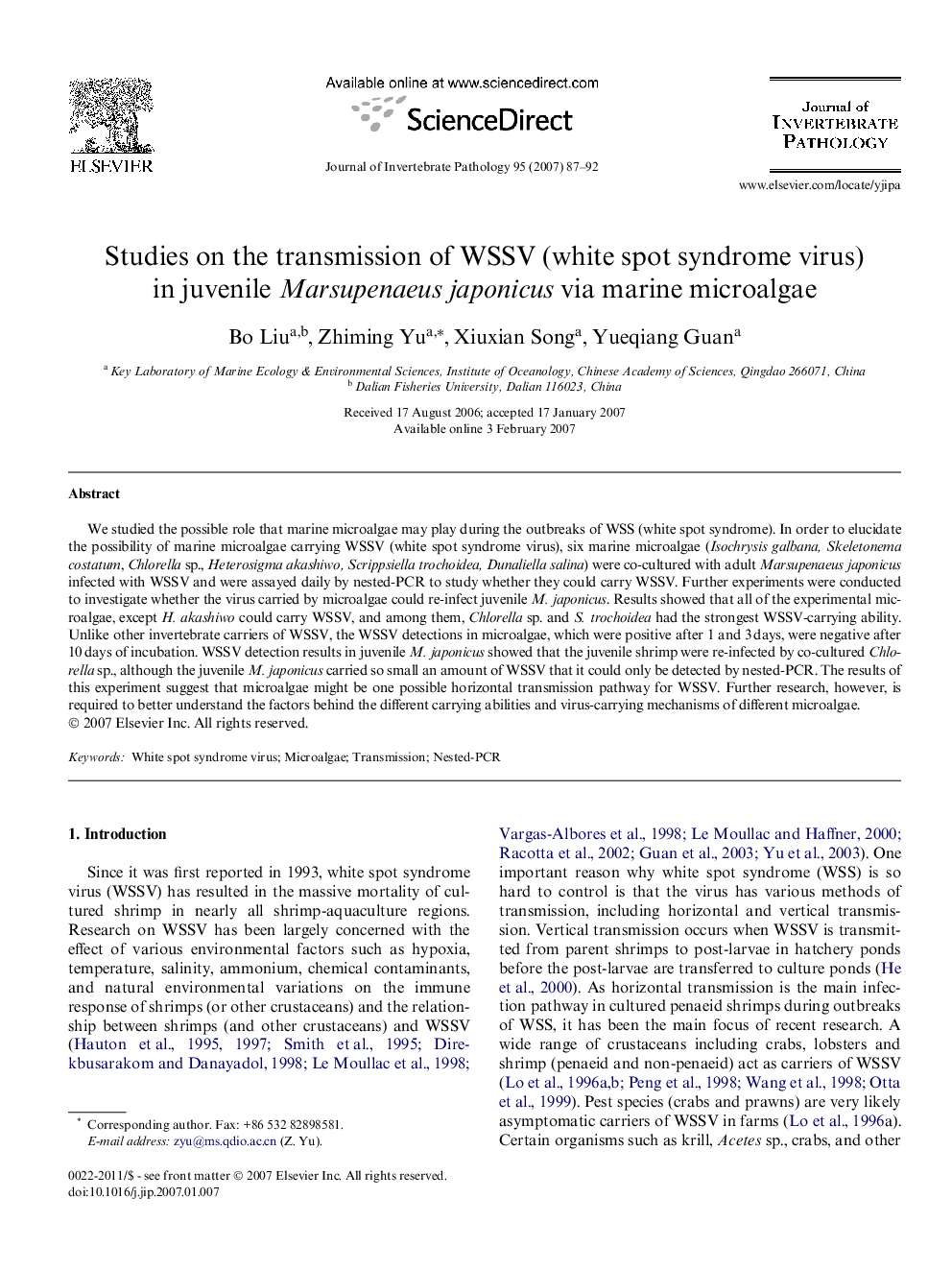| کد مقاله | کد نشریه | سال انتشار | مقاله انگلیسی | نسخه تمام متن |
|---|---|---|---|---|
| 4558745 | 1329958 | 2007 | 6 صفحه PDF | دانلود رایگان |

We studied the possible role that marine microalgae may play during the outbreaks of WSS (white spot syndrome). In order to elucidate the possibility of marine microalgae carrying WSSV (white spot syndrome virus), six marine microalgae (Isochrysis galbana, Skeletonema costatum, Chlorella sp., Heterosigma akashiwo, Scrippsiella trochoidea, Dunaliella salina) were co-cultured with adult Marsupenaeus japonicus infected with WSSV and were assayed daily by nested-PCR to study whether they could carry WSSV. Further experiments were conducted to investigate whether the virus carried by microalgae could re-infect juvenile M. japonicus. Results showed that all of the experimental microalgae, except H. akashiwo could carry WSSV, and among them, Chlorella sp. and S. trochoidea had the strongest WSSV-carrying ability. Unlike other invertebrate carriers of WSSV, the WSSV detections in microalgae, which were positive after 1 and 3 days, were negative after 10 days of incubation. WSSV detection results in juvenile M. japonicus showed that the juvenile shrimp were re-infected by co-cultured Chlorella sp., although the juvenile M. japonicus carried so small an amount of WSSV that it could only be detected by nested-PCR. The results of this experiment suggest that microalgae might be one possible horizontal transmission pathway for WSSV. Further research, however, is required to better understand the factors behind the different carrying abilities and virus-carrying mechanisms of different microalgae.
Journal: Journal of Invertebrate Pathology - Volume 95, Issue 2, June 2007, Pages 87–92